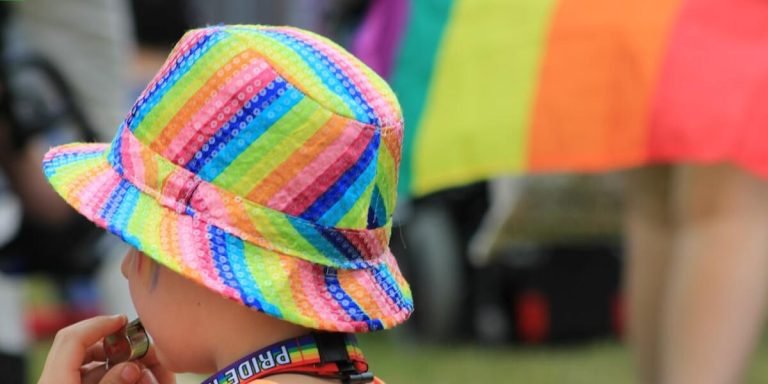Theories of Child Development: A Comprehensive Exploration
Understanding the intricate theories of child development is an essential aspect for parents and educators alike. As children grow, they constantly adapt to new environments and learn from their interactions, both physical and social. These learning experiences are guided by numerous developmental theories that seek to explain how kids evolve cognitively, emotionally, socially, as well as physically.
These theories of child development not only provide a comprehensive framework for understanding various stages of childhood progression but also illuminate effective methods in supporting those with unique needs. Special education resources can be tailored according to these theoretical approaches ensuring all students’ diverse educational necessities are catered to adequately & holistically.
Did you know?
An intriguing, yet lesser-known fact about child development is that by the age of five, a child’s brain will already be 90% developed. This early and rapid growth emphasizes the crucial importance of enriching experiences during these formative years.
Understanding Theories of Child Development in Special Education
The unique facet of theories of child development in the context of special education lies in their expansive range and versatility. These are not rigid constructs, rather they adapt as per each child’s individual needs, acknowledging that every learner is different. In 2023 where technology integration serves as a transformative tool in education, these developmental theories gain new dimensions.
Integrating technology into learning strategies has fortuitously opened up avenues to design personalized lesson plans centering around all-encompassing growth patterns detailed by various theorists across time. Be it Piaget’s cognitive stages or Vygotsky’s social interactionist theory – tech-instigated teaching methodologies now have the capabilities to cater to diverse neurological backgrounds while promoting inclusivity.
Application examples vary from using Augmented Reality (AR) tools for better sensory engagement – staying true to Montessori methods – or incorporating artificial intelligence-enabled devices encouraging self-paced interactive learning akin Howard Gardner’s multiple intelligence approach. Technology does not simply act as an add-on but synergizes with educational techniques ensuring children with special needs aren’t just recipients but active participants within their tailored curriculum crafted through a union of theoretical understanding and advanced resources.
Applying Piaget’s Stages to Tailored Learning Programs
Child development theory is an essential part of effective special education. Understanding the fundamental theories of child development offers educators valuable insight into how children think, learn and grow. One such critical model is Jean Piaget’s Stages of Cognitive Development.
Applying these stages to personalized learning programs can benefit greatly in nurturing a conducive learning environment for students with unique requirements.
Please provide the content that you would like me to edit or confirm if there is no content to be edited.
During this stage, infants build knowledge through sensory experiences and motor actions. In terms of educational technology integration, imagine engaging apps designed specifically for early learners with disabilities – interactive games encouraging physical movement or touch-screen activities promoting hand-eye coordination could be instrumentalized effectively here.
Youngsters become more proficient in using symbols like words or pictures but struggle to see things from others’ viewpoints—an appropriate use case here maybe pictorial storytelling via digital tools or language-building online games helping them express themselves better while understanding abstract concepts too.
Children start thinking logically about concrete events; however, they have difficulty processing hypothetical situations or abstract thoughts—building on this premise, virtual lessons dealing heavily within experiential realities may prove useful towards letting kids get familiarised with “cause-and-effect” scenarios while enhancing logical reasoning abilities along the way.
Levering Vygotsky’s Sociocultural Theory for Enhanced Support
Integrated technology in special education can transform the learning process for students with unique needs. Lev Vygotsky’s Sociocultural Theory, one of the key theories of child development, places significant emphasis on social interaction and cultural context as integral parts for cognitive development.
Vygotsky believed that communities significantly shape their members’ ways of thinking. What does that imply? Every child has potential; it just needs a supportive environment to unravel.
Special educators utilizing technology integrate his valuable insights into their strategy providing an enriched interactive platform where these children are not alone but part of a thriving community.
Learning is no more confined within four walls; neither should be limited by physical or mental constraints any individual might have—integration of relevant technologies aids in dismantling such barriers creating inclusive classrooms empowering personal and intellectual growth irrespective.
Designing Resource-Rich Environments Based on Developmental Theories
Designing resource-rich environments for children, educators and parents alike require a solid understanding of the myriad theories of child development. In this digital age, technology integration in education serves as a robust tool that can significantly enhance the learning experience. As per well-established developmental theories such as Jean Piaget’s cognitive theory or Erickson’s psychosocial stages, it’s clear how pivotal each stage is to a child’s growth.
The key lies in adapting these theoretical frameworks into practical educational resources by harnessing modern technology. For example, using VR technologies to simulate real-world experiences offers an immersive method for children to learn and grow at their own pace while aligning with concrete operational stage outlined by Piaget. Likewise, fostering online communities where students can freely interact promotes social-emotional skills highlighted in Erikson’s model.
Special Education Resources take on paramount importance when considering inclusivity within our teaching methods guided by these tried-and-tested frameworks. Assistive tech tools like text-to-speech software or adaptive keyboards significantly aid differently-abled learners’ journey through child development milestones supporting Vygotsky ‘s Zone of Proximal Development Theory – bridging what they know and what they’re about to learn next.
In 2023 – amidst rapid technological advancements- designing resource-rich environments are no longer confined within traditional classroom boundaries but rather expanded towards virtual platforms built upon tested educational principles — aiding learners universally without discrimination of physical ability or geographic location .
Incorporating Montessori Methods into Special Needs Education
Recognizing the unique potential in every child lies at the heart of Montessori education. It’s a philosophy that aligns perfectly with addressing special needs students, grounded heavily on principles drawn from theories of child development.
In 2023, create tailored learning programs that follow each individual’s pace and ability to incorporate Montessori methods into Special Needs Education. Integrate this educational approach by:
- individualized learning plans focusing on the student’s strengths and interests.
- prepared environment where everything is accessible and encourages self-directed learning.
- Using hands-on materials to facilitate sensory engagement and active participation.
- Providing opportunities for choice, giving students control over their learning process.
- Encouraging collaborative activities to promote social skills and peer interaction.
Take these steps to create a supportive, flexible, and inclusive classroom for students with special needs using Montessori education principles.
Firstly, adapt normal classroom activities: Modify traditional hands-on Montessori materials so they match your learner’s capabilities better while still retaining their essential elements.
Thirdly,promote self-directed learning: Allow children autonomy over choosing tasks within pre-set boundaries; nurture independence gradually without overwhelming them.
Finally,focus also on emotional development : The use of social-emotional apps goes hand-in-hand with academic progress by helping manage stress levels which often obstruct effective cognitive functioning & inhibit growth according to numerous theories of child development.
Remember always ,each strategy should be molded around the student- not vice versa.This process may require time but its end results justify it wholeheartedly as we watch our formerly frustrated learners blossom into confident individuals who realize their intrinsic worth step-by-step!
Utilizing Bruner’s Spiral Curriculum in Individualized Educational Plans (IEPs)
Established on the principle that learning is a process that leads to new stages of cognitive capability, Bruner’s Spiral Curriculum essentially emphasizes revisiting learned content at set intervals and reintroducing them in more sophisticated forms – akin to spirals. The beauty lies not only in this repetition but also in the expanded depth and complexity introduced each time.
Applying this perspective while drafting IEPs for children can yield effective results particularly when channeled through technology integration in education happening today. For instance, incorporating digital activities like online quizzes or animated slideshows into lesson plans allows students both reinforcement and variation from traditional instructional mediums.
Moreover, these technologically-facilitated resources are often compatible with diverse learning abilities thereby catering specially towards special needs individuals who require unique means for meaningful engagement—a common expectation within Special Education Resources and Support programs current year being 2023.
Assessing and Adapting Instruction Using Child Development Milestones
Assessing and adapting instruction using child development milestones is an integral part of modern education, bringing together both technology integration in education as well as special resources support for individual learners. Understanding the various theories of child development can enable educators to create a learning environment that supports all children’s unique growth patterns.
Innovative technologies are increasingly used to measure developmental progress more accurately in this digital age. Cutting-edge educational software provides teachers with the tools they need to effectively track student progression against defined milestones, offering insights into their cognitive, physical, and social-emotional development.
This data-driven approach aligns perfectly with Jean Piaget’s Theory of Cognitive Development, which emphasizes building comprehension based on stages. It helps design personalized lesson structures tailored to each student’s specific needs.
At the same time, individualized plans must be supported by adequate resources—especially when it comes to special education programs. Inclusive classrooms foster holistic environments where students regardless of differences learn alongside one another under guidance from skillfully trained professionals who believe every learner deserves equal opportunities at success throughout their scholastic journey; ensuring no milestone ever goes unnoticed or unattended due to lackings within systemic procedures elsewhere implemented otherwise ineffectively.
Benchmarking with Erikson’s Psychosocial Stages in IEP Assessments
In the quest to provide effective Special Education Resources and Support, one approach that continues to prove invaluable is benchmarking with Erikson’s Psychosocial Stages in Individualized Education Program (IEP) assessments. This method incorporates theories of child development into special education practices, enhancing their relevance and efficacy.
Erik Erikson’s theory, a respected pillar amongst numerous theories of child development, outlines eight psychosocial stages each individual traverses from infancy through adulthood. Each stage presents unique challenges which must be navigated successfully for optimal emotional growth.
When applied to IEP evaluations within a technology-facilitated educational space, these developmental markers offer insightful perspectives about where students are on their personal journey of physical and psychological maturation. They allow educators to judge whether student responses align appropriately with expected results based on age-specific milestones or if additional interventions may be required.
Benchmarking ensures that instruction provided dovetails seamlessly with each learner’s current psycho-emotional state while offering an opportunity for teachers to implement strategies derived directly from credible developmental psychology principles such as those formulated by Erikson.
Crafting Differentiated Strategies from Gardner’s Multiple Intelligences Theory
In the realm of childhood education, understanding child development milestones is critical for tailoring meaningful instruction. In this context, using theories of child development such as Gardner’s Multiple Intelligences theory can guide educators in crafting differentiated strategies to improve learning outcomes.
Careful assessment and strategy are necessary to optimize technology integration across varied domains. For instance,
Linguistic learners who excel at reading or writing might benefit from tailored language apps or interactive e-books that emphasize verbal proficiency.
Logical-Mathematical thinkers are inclined towards problem-solving; hence technologies like coding games or math puzzles could enhance their computational skills.
Spatial-Visual pupils respond well to visual aids – think virtual reality activities designed for artistic expression or geographical exploration.
Bodily-Kinesthetic students have keen body awareness which can be tapped through motion-capture tech devices harnessed creatively into science experiments demonstrating physical principles.
Conclusion
In wrapping up, we cannot overemphasize the importance of these theories of child development in molding our understanding and approach to childhood education. Each theory enlightens us on a different facet: from cognitive growth by Piaget’s stages, emotional intelligence via Erikson’s psychosocial idea, right down to social learning through Bandura’s perspective. Our knowledge as caring parents or committed educators is greatly enriched when applied thoughtfully.
Yet remember that there is no one-size-fits-all strategy in raising humans brimming with endless potentialities. Keep this discussion an ongoing process! Always be open for more enlightenment and adaptation depending upon your child’s unique traits and circumstances—our website serves precisely for this purpose!
Navigate around; you’ll discover ample resources tailored not just toward intelligent teaching but also effective parenting strategies — building together the best launchpad for every youngster stepping into tomorrow.







